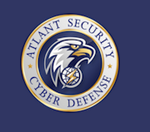Ransomware is malicious software that encrypts a victim’s files or locks their computer system, demanding a ransom payment for the decryption key or access restoration. In recent years, ransomware attacks have become a significant and growing threat to individuals, businesses, and governments worldwide. Several factors contribute to this menace, including the ease of deployment, lucrative rewards, and evolving attack techniques.
- The proliferation of Ransomware-as-a-Service (RaaS): The RaaS business model allows cybercriminals to purchase or rent ransomware tools on the dark web, making it easier for non-technical criminals to carry out ransomware attacks. This has significantly expanded the number of potential attackers and increased the frequency of attacks.
- Lucrative Rewards: The financial success of ransomware attacks has incentivized cybercriminals to continue developing and deploying new strains. Victims often have limited options, opting to pay the ransom to recover their critical data. This trend has made ransomware a profitable enterprise for criminals.
- Anonymity and Cryptocurrency: The widespread adoption of cryptocurrencies, such as Bitcoin, has facilitated anonymous transactions, making it difficult for law enforcement to track ransom payments and apprehend criminals. This has emboldened attackers and made it easier to demand and receive ransoms.
- Evolving Attack Techniques: Cybercriminals are constantly changing their techniques to bypass security measures and increase the effectiveness of their attacks. This includes using more sophisticated encryption algorithms, exploiting zero-day vulnerabilities, and utilizing social engineering tactics to trick victims into activating ransomware.
- Targeting Vulnerable Sectors: Ransomware attackers often target organizations with weak security measures or critical operations, such as healthcare, education, and government sectors. The urgency to restore services in these sectors increases the likelihood of ransom payments.
- Remote Work and Internet of Things (IoT): The shift to remote work and the increasing number of connected devices have expanded the attack surface for ransomware, providing more opportunities for cybercriminals to infiltrate networks.
A Multi-Layered Security Approach for Enterprises
To effectively protect against ransomware attacks, enterprises should adopt a multi-layered security approach encompassing prevention, detection, response, and recovery measures. Here are the critical components of such an approach:
- Regular Data Backups: Establish a robust backup strategy that includes traditional, automated backups of all critical data. Store these backups on multiple media types and in multiple off-site locations. Ensure backups are not directly accessible from the main network to prevent ransomware from encrypting the backup files.
- Employee Security Awareness Training: Develop comprehensive security awareness training programs for all employees, including training on identifying and avoiding phishing emails, social engineering attacks, and other common attack vectors. Conduct regular training sessions and updates to ensure employees know about emerging threats.
- Software Updates and Patch Management: Maintain a strict patch management policy, ensuring that all software, firmware, and operating systems are up-to-date with the latest security patches. This reduces the chances of ransomware exploiting known vulnerabilities.
- Access Controls and Network Segmentation: Implement strict access controls to restrict user access to sensitive data and systems. Limit administrator privileges and enforce the principle of least privilege. In addition, segment the network to prevent the lateral movement of ransomware within the organization, minimizing potential damage.
- Endpoint Security: Deploy advanced endpoint security solutions that detect and block ransomware attacks, including behavioral analysis, machine learning, and sandboxing technologies. Regularly update and configure these solutions to protect against new ransomware variants.
- Email Security: Implement strong email security measures, such as spam filtering, phishing detection, and attachment scanning, to prevent malicious emails from reaching users. Consider adding multi-factor authentication (MFA) for email accounts to minimize the risk of account compromise.
- Intrusion Detection and Response: Deploy network and host-based intrusion detection systems (IDS) to monitor network traffic and system activities for signs of a ransomware attack. Develop a well-defined incident response plan that outlines roles, responsibilities, and procedures for identifying, containing, and eradicating threats.
- Threat Intelligence: Stay informed about emerging ransomware threats and indicators of compromise (IOCs) by subscribing to threat intelligence feeds and joining industry-specific threat-sharing groups. Use this information to adapt security measures and respond to new threats proactively.
- Regular Security Audits and Vulnerability Assessments: Conduct regular security audits and vulnerability assessments to identify weaknesses in your IT infrastructure and security measures. Remediate identified vulnerabilities promptly to reduce the likelihood of successful ransomware attacks.
- Business Continuity and Disaster Recovery (BC/DR) Planning: Develop a comprehensive BC/DR plan that outlines procedures for recovering critical systems and data during a ransomware attack. Regularly test and update the plan to ensure its effectiveness in various scenarios.
By adopting a multi-layered security approach, enterprises can minimize the risk of falling victim to ransomware attacks and mitigate the potential impact on their operations, ensuring continued business resilience and security.
The Role of Law Enforcement:
Governments, law enforcement agencies, and enterprises can work together to combat ransomware and other cyber threats through effective collaboration, intelligence sharing, policy development, and investment in technology. Here are some ways they can achieve this:
- Establish Cybersecurity Partnerships: Create forums or networks that facilitate regular communication and collaboration among government agencies, law enforcement, and the private sector. These partnerships can help build trust, share expertise, and coordinate joint efforts to prevent and mitigate cyber-attacks.
- Share Intelligence and Threat Information: Encourage sharing of threat intelligence, indicators of compromise (IOCs), and attack trends among participating entities. This can include establishing centralized platforms or participating in existing information-sharing and analysis centers (ISACs). Timely sharing of actionable intelligence can help organizations proactively adapt their security measures and respond to emerging threats.
- Develop and Enforce Cybersecurity Policies: Governments should work with enterprises to develop comprehensive cybersecurity policies, regulations, and standards that set clear expectations for data protection and incident response. Then, regularly review and update these policies to ensure they remain effective in the face of evolving threats.
- Coordinate Incident Response and Investigation: Strengthen cooperation between law enforcement agencies and the private sector when responding to cyber incidents. Develop clear protocols for reporting incidents, sharing information, and collaborating on investigations. This can help identify and apprehend cybercriminals while minimizing the impact of attacks on affected organizations.
- Promote Cybersecurity Best Practices: Governments and law enforcement should work with enterprises to promote adopting best practices for cyber hygiene and risk management. This can include providing guidance, resources, and training to help organizations implement adequate security measures and develop a security-conscious culture.
- Invest in Research and Development: Encourage and support investment in cybersecurity research, innovation, and technology development. Public-private partnerships can help advance cutting-edge solutions for detecting, preventing, and mitigating cyber threats while supporting the growth of the cybersecurity industry.
- Enhance International Cooperation: Foster collaboration and coordination among governments and law enforcement agencies across national borders. Cyber threats are global, and a unified international effort is essential to combat ransomware and other cybercriminal activities effectively.
- Build Cybersecurity Workforce Capacity: Work together to develop and support education and training programs that build a skilled cybersecurity workforce. This includes encouraging partnerships between academic institutions, government, and industry to develop relevant curricula and provide practical training opportunities.
- Conduct Joint Cybersecurity Exercises: Organize joint cybersecurity exercises that simulate real-world cyber attacks. These exercises can help identify potential weaknesses, evaluate the effectiveness of security measures and incident response plans, and strengthen overall preparedness for cyber threats.
Hiring a Ransomware Negotiation Firm:
Hiring a ransomware negotiation firm can help enterprises navigate the complex and risky process of dealing with attackers. When looking for a ransomware expert, enterprises should consider the following capabilities:
- Extensive Experience: The firm should have a proven track record in handling ransomware incidents, with demonstrable experience in successful negotiations and outcomes. Their team should consist of professionals with cybersecurity, digital forensics, and incident response expertise.
- Negotiation Skills: Effective negotiation skills are crucial when dealing with ransomware attackers. The firm should have experienced negotiators who understand the attacker’s mindset and can navigate the conversation to achieve the best possible outcome for the client.
- Assertive Communication: The ransomware expert must have excellent communication skills to ensure a transparent and open dialogue with the client. This includes providing regular updates and ensuring the client understands each decision’s potential risks and outcomes.
- Legal and Regulatory Compliance: The firm should thoroughly understand ransomware’s legal and regulatory landscape and ensure that its advice and actions comply with applicable laws and regulations. This can help minimize potential legal consequences for the client.
- Risk Assessment and Mitigation: The ransomware expert should be able to assess the risks associated with the ransomware attack and help the client develop a mitigation strategy. This includes evaluating the likelihood of data recovery without paying the ransom, potential negotiation risks, and ensuring appropriate precautions are taken to protect the client’s interests.
- Technical Expertise: The firm should have the technical capabilities to analyze the ransomware, determine its encryption mechanism, and explore potential avenues for decryption. Sometimes, decryption tools may already be available, or the ransomware may have weaknesses that can be exploited to recover the data.
- Crisis Management: Ransomware attacks often create a crisis for the affected organization. The ransomware expert should have experience managing crises, including coordinating with stakeholders, managing public relations, and guiding the client through decision-making.
- Post-Incident Support: The ransomware negotiation firm should offer support beyond the negotiation process, such as assistance with data recovery, system restoration, and implementing security measures to prevent future incidents.
- Confidentiality and Discretion: The firm must maintain strict confidentiality and discretion when handling sensitive client information and details of the ransomware incident. This is crucial in minimizing potential reputational damage and protecting the client’s interests.
Reputation and References: A reputable ransomware negotiation firm should be able to provide references from previous clients who can attest to their expertise, professionalism, and success in handling ransomware incidents.


















